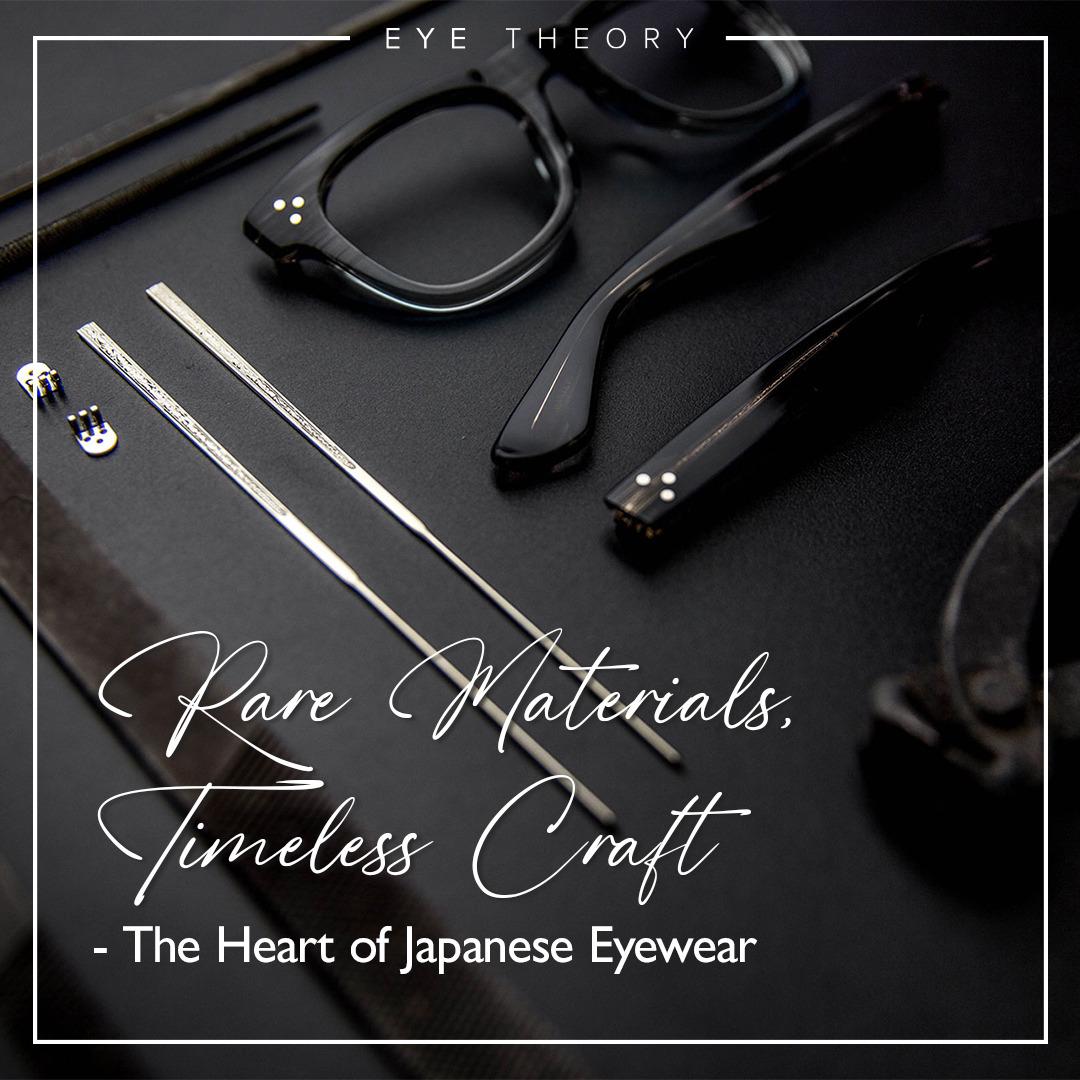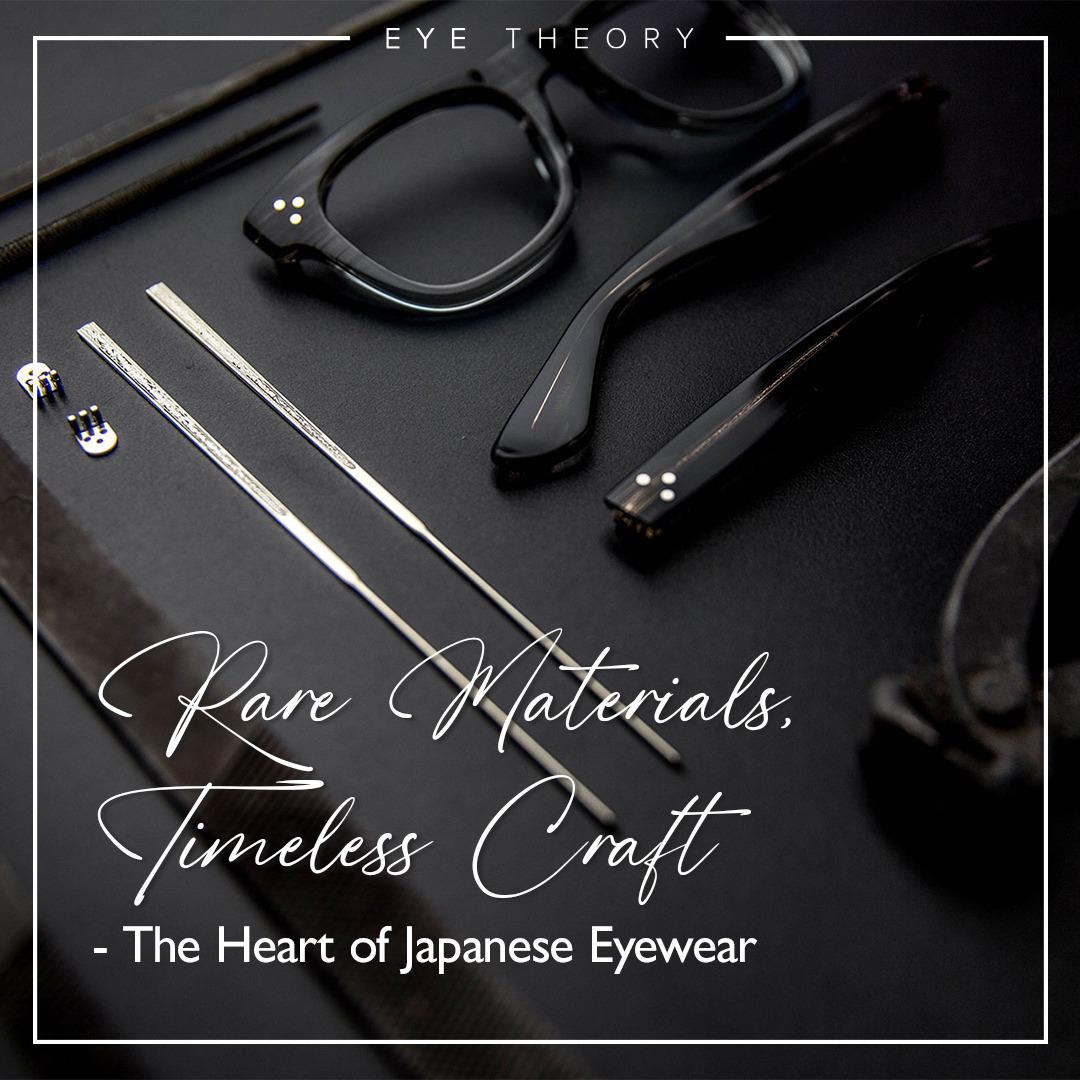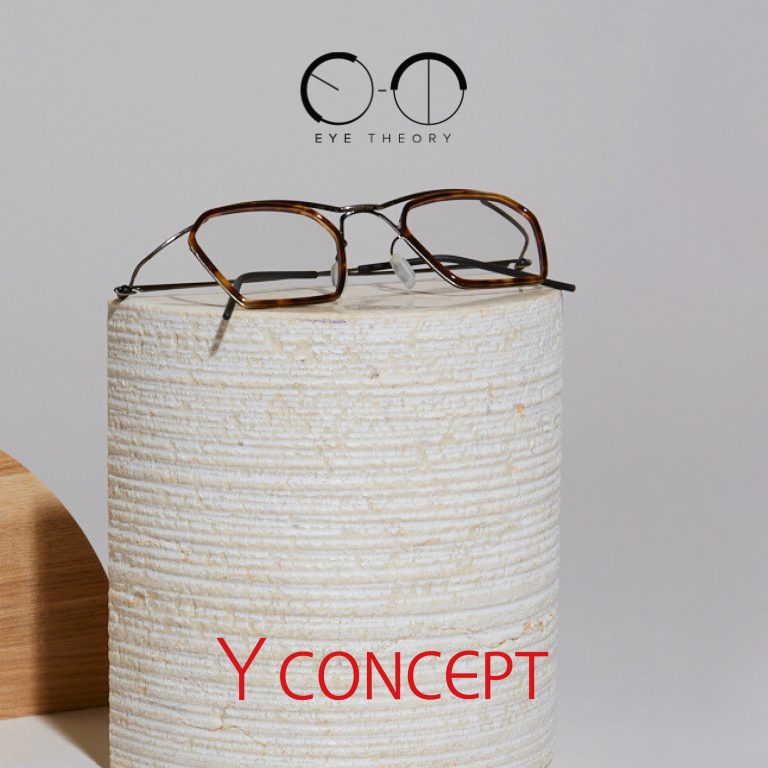
In the world of eyewear, Japan stands as a beacon of craftsmanship, turning functional accessories into true works of art. It is a realm where high-end and luxury are not merely defined by price but rather by the intricate stories and thoughtful processes woven into each pair of eyeglasses. Japanese eyewear is akin to wearable art, a testament to the dedication and passion of artisans who meticulously handcraft each piece through a minimum of 250 steps. In this exploration, we dive deep into the alchemy of Japanese eyewear, focusing on three distinct materials: titanium, celluloid, and acetate.
Japanese Acetate: A Symphony of Color and Craftsmanship

The allure of Japanese eyewear begins with the exceptional quality of acetate used in crafting frames. The brilliance of Japanese acetate frames is immediately evident in the remarkable shine and extraordinary richness of color. In contrast to the vibrant hues found in European acetates, Japanese acetates feature an exclusive range of deeper, richer, and earthy colors, distinguishing them with a unique allure.
The secret lies in the meticulous three-month curing process, a specialized journey that involves polishing and sculpting the acetates with utmost precision. This delicate process is entrusted only to artisans who have undergone rigorous training, ensuring that each piece of eyewear becomes a distinct masterpiece. The result is not just a functional accessory but a wearable piece of art, a testament to the harmonious fusion of craftsmanship and creativity.
Celluloid: The Endangered Elegance

In the pursuit of pushing boundaries, some Japanese factories continue to employ celluloid, a rare material that imparts a distinctive elegance to eyewear. However, the use of celluloid is at a crossroads, facing a decline due to the imminent retirement of skilled artisans proficient in working with this unique substance.
Celluloid possesses the potential to achieve a luster that surpasses even the finest acetate, provided it is handled with the utmost expertise. The material, however, presents challenges. Highly flammable, celluloid demands a specialized environment and skill set for handling. The dwindling number of artisans willing to work with celluloid raises concerns about the material’s future in the eyewear industry.
This impending scarcity adds a layer of rarity to celluloid eyewear, making it not just a statement of elegance but also a collector’s item. The impermanence of celluloid in eyewear production serves as a poignant reminder of the ephemeral nature of certain artistic techniques, with celluloid possibly fading from the eyewear scene within the next 5 to 10 years.
Titanium: Pioneering Excellence

Japan’s legacy in eyewear innovation extends to being the first to introduce titanium as a material for frames. Titanium brought with it a revolution, offering a combination of excellent lightness and sturdiness that surpassed conventional stainless steel eyewear. Yet, achieving perfection in titanium eyewear is no simple task.
The purity of the titanium alloy plays a crucial role in the difficulty of brazing joints. Japanese artisans, dedicated to achieving unparalleled quality, opt for purer titanium alloys to strengthen the joints. This commitment to excellence, however, comes at the cost of increased crafting time, rendering mass production impractical.
The precision in cutting titanium is a source of immense pride for Japanese artisans. Given that eyewear frames depend on tiny screws and accurately drilled holes, the meticulousness of these processes is a testament to the craftsmanship involved. The smooth movement of joints serves as a tangible indicator of the effort and precision invested in creating each frame.
Beyond the cutting process, the welding of joints in Japanese titanium frames is executed with precision, resulting in even and well-polished connections. Artisans often specialize in specific materials, and those trained in titanium dedicate their careers to perfecting this craft. The dedication to their art becomes a lifelong pursuit, with some finding their passion for eyewear as their personal ikigai.
The Holistic Approach: Artisans and Specialties
In Japan, eyewear craftsmanship is not merely a skill; it is an art form that requires a holistic approach. Different artisans specialize in various materials, dedicating their entire careers to honing specific skills. This specialization allows artisans to reach near-perfection in their chosen craft, contributing to the overall excellence of Japanese eyewear.
The accuracy in cutting titanium, the delicate handling of celluloid, and the intricate curing process of acetate are not just technicalities but expressions of the artisan’s dedication to their craft. Each artisan becomes a master of their chosen material, and this specialization contributes to the diversity and uniqueness of Japanese eyewear.
Japanese eyewear stands as a testament to the seamless fusion of tradition, innovation, and artistic expression. The careful selection of materials, such as Japanese acetate, celluloid, and titanium, elevates eyewear from a functional necessity to a form of wearable art. As celluloid faces the risk of fading into obscurity, its rarity adds a layer of preciousness to the material. Meanwhile, titanium and acetate continue to evolve, with Japanese artisans pushing the boundaries of excellence.
In a world where mass production often dominates, Japanese eyewear preserves the essence of craftsmanship. Each pair tells a story of dedication, precision, and passion. As we continue to witness the evolution of eyewear, the legacy of Japanese craftsmanship ensures that each piece remains not only a vision aid but a tangible expression of artistry and innovation.
At Eye Theory, our Japanese collection is chosen individually with meticulous precision, made from the pinnacle of premium craftsmanship, fashioned from top-quality materials and built to withstand the test of time. Explore our exclusive selection of Japanese glasses today!



